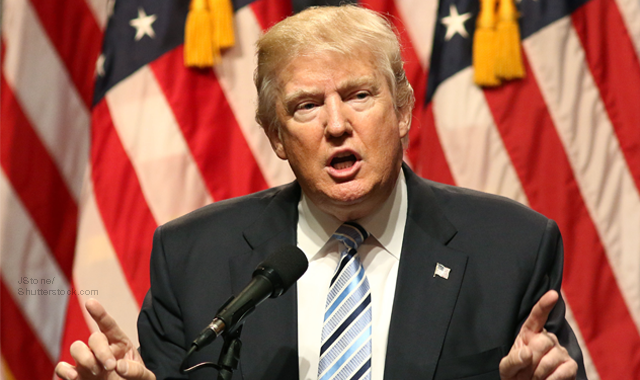Article
Trump seeks to boost Medicare Advantage to fend off Medicare For All
Author(s):
President Trump signed an executive order to find ways to boost Medicare Advantage as a pre-emptive strike against Democrats’ call for Medicare for All

President Donald J. Trump pushed back against his democratic rivals October 3 by signing an executive order aimed at taking the wind out of the sails of their Medicare for all propositions.
The executive order says that the proposals calling for "Medicare for All" in the Senate would destroy the current Medicare program, and that the executive action is intended to protect and improve the program by “enhancing its fiscal sustainability through alternative payment methodologies that link payment to value, increase choice, and lower regulatory burdens imposed upon providers.”
What does this mean for physicians? The plan looks as though it would provide a boost to physicians who see patients with Medicare Advantage (MA) plans, as Trump appears to want to boost MA usage rather than depending on classic Medicare service.
Specifically, the order calls on HHS Secretary Alex Azar to propose regulations and other actions which will provide more plan choices to patients by:
- encouraging new Medicare Advantage (MA) benefit structures that make it easier to get a Medicare Medical Savings Account,
- create a payments system that creates incentives to seek “high-value care,” and ensure that Fee For-Service (FFS) Medicare is not promoted over MA.
The executive order also tasks Azar with preparing a report that identifies ways to modify Medicare FFS so that the costs reflect prices paid in MA and commercial insurance markets.
The order also seeks to improve access to care through adjusting network adequacy requirements in MA plans to account for competitiveness in statewide markets, enhanced access to physicians through telehealth programs.
It also seeks to cut through regulatory and billing red tape to allow physicians and other providers to spend more time with their patients and get reimbursed for it-whether they are physicians, physician assistants, or registered nurses.
Trump is also seeking to encourage innovation by streamlining approval, coverage, and coding so that new medical devices and telehealth advances are brought to market, reimbursed, and widely available faster.
The order also has provisions pushing Azar to reward care through site neutrality; empower patients, caregivers, and health providers; eliminate waste, fraud, and abuse; reduce obstacles to improved patients care; and maximize freedom for Medicare patients and physicians.
In a statement, CMS Administrator Seema Verma lauded the order:
“As head of the Medicare program, I am proud of President Trump’s historic action to deliver on his enduring commitment and promise to strengthen and protect this sacred program for America’s seniors who have paid into the program their entire lives,” she says. “We look forward to swiftly implementing these bold and comprehensive policies, which build on the steps we have already taken, to increase choices, encourage medical innovation, empower patients, and eliminate waste, fraud and abuse to protect seniors and taxpayers.”
This move comes less than two weeks before Medicare open enrollment is set to begin on October 15, which is the same night a slate of 12 Democratic primary candidates who’ve nearly all endorsed some form of universal healthcare will take the debate stage in Westerville, Ohio.
All of the candidates have been taking aim at Trump as a chief foil going into the 2020 election, and healthcare is one of the main issues under discussion. Not all of the Democratic presidential field supports "Medicare for All"-the idea is championed by Vermont Sen. Bernie Sanders, who sponsored the legislation in the Senate. While other candidates, namely Massachusetts Sen. Elizabeth Warren, has said she supports "Medicare for All", other candidates have instead called on achieving better and more affordable healthcare in other ways, such as improving the Affordable Care Act and putting caps on patient out-of-pocket expenses.





